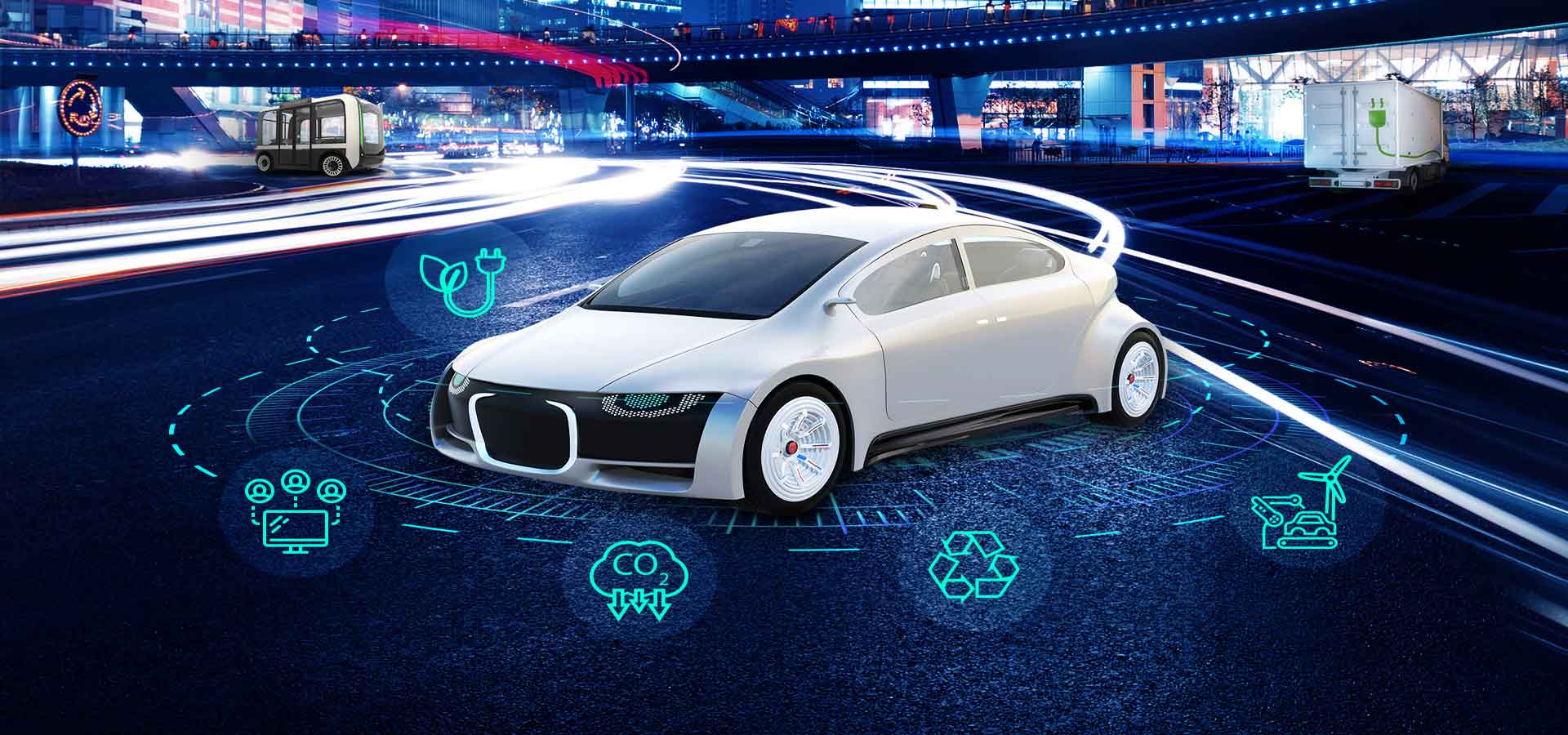Boost Sustainable Mobility in the Automotive Industry
See how the Virtual Twin strategy enables automotive innovators to develop high-performance, zero-emission, recyclable vehicles
Why End-to-End Sustainable Mobility is Strategic
As the effects of climate change continue to deepen, automotive manufacturers and other industry players are under pressure to transform what and how they produce.
Road transportation accounted for 12% of global greenhouse gas emissions in 2020. This doesn’t include the impact from production, only the vehicle use. There’s an enormous opportunity for sustainable innovation in the mobility space, which can be enabled and accelerated by technology. The innovation ranges from researching new recyclable and lightweight materials to simulating new forms of batteries in virtual environments.
Sector by sector: where do global greenhouse gas emissions come from?
Globally, we emit around 50 billion tonnes of greenhouse gases each year. Where do these emissions come from? We take a look, sector-by-sector.
by Hannah Ritchie
However, driving sustainable mobility from start to finish of a vehicle lifecycle is challenging, mainly due to a complex and siloed automotive ecosystem with thousands of participants scattered worldwide.
How can automotive manufacturers and their suppliers begin bringing together these dispersed stakeholders? It’s possible with an integrated platform that enables the virtual twin and other capabilities to lower the vehicle’s end-to-end carbon footprint.
Connect Global Automotive Collaborators for Optimal Results
Our ebook demonstrates how automotive manufacturers and their suppliers can bring together all ecosystem participants to drive end-to-end sustainable mobility.
Three Pillars of Sustainable Mobility
An optimal platform strategy drives end-to-end sustainable mobility by enabling ecosystem participants to develop and deliver greener vehicles together. On an integrated platform, automotive manufacturers and their suppliers can work closely with internal departments and external stakeholders such as parts suppliers, cities, energy supply infrastructure owners and shared mobility operators.
To support sustainability-focused decisions, the platform should provide all collaborators with the virtual twin capability. This way, they can create an accurate digital model of a vehicle or process for what-if experimentation before arriving at the optimal decision.
With such a platform, manufacturers and suppliers can advance their sustainability goals through the following pillar:
- 3D vehicle simulation
A single platform connects all stakeholders to foster automotive innovation and minimize late issue discoveries. Stakeholders can work together to develop zero-emission vehicles with high durability and recyclability through vehicle simulation, where the virtual twin of a new design is used for a complete analysis of the vehicle without physical prototypes. This leads to cost savings, and rapid optimization of battery performance, electric drive engineering and Worldwide Harmonized Light Vehicles Test Procedure (WLTP) compliance.
- First-time-right manufacturing
Sustainability includes getting manufacturing right the first time. An integrated platform equips manufacturers with the ability to collaborate virtually in one place. With the ability to try different configurations on a virtual twin of the physical factory, stakeholders can explore options without impacting the actual production and determine the best decision together.
- Optimized after-sales performance
Manufacturers can ensure optimal vehicle servicing and maintenance by using the virtual twin’s information for prescriptive maintenance. The physical vehicle on the road is connected to its virtual twin, feeding it data on use patterns, performance, driving conditions and servicing requirements. An Accenture case study reported that the virtual twin increased vehicle life by up to 30 percent based on such applications.
Sustainable Mobility From Start to Finish on a Single Platform
The optimal platform strategy for end-to-end sustainable mobility can be found in Dassault Systèmes’ 3DEXPERIENCE® platform.
It’s a new way to collaborate with the virtual twin at the center of the 3DEXPERIENCE platform. We call this a virtual enterprise where manufacturers are not limited by physical factors and silos. Instead, they can easily work with stakeholders around the globe to boost sustainability in the automotive industry,


